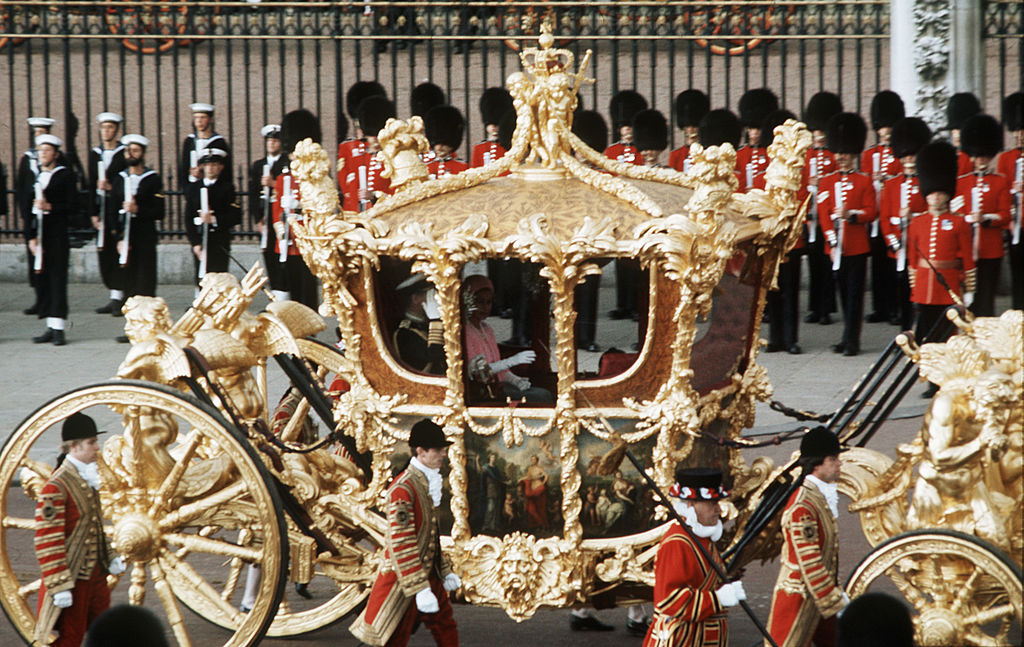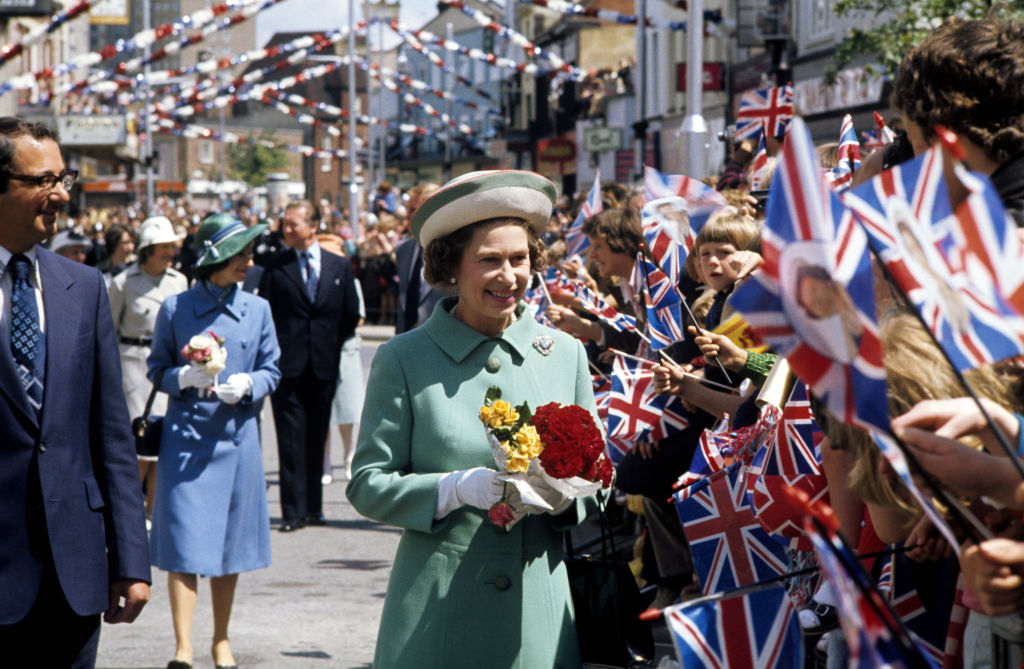
Queen Elizabeth II, Britain’s longest serving monarch, celebrates her 70-year anniversary on the throne this year. Starting Thursday, people across the U.K. will participate in national festivities stretching over two public holidays and a weekend to commemorate the Platinum Jubilee.
The U.K., and indeed much of the rest of the world, has changed dramatically since Elizabeth took the throne in 1952: she has presided over a dozen Prime Ministers, more than 50 Commonwealth nations, and witnessed former British colonies gain independence. But a constant throughout her 70-year rule has been her enduring popularity among the British people and the ritualistic celebration of her Jubilee anniversaries.
From the grand ceremonies hosted by the royal family, to the community street parties taking place across the nation, Jubilee celebrations are a quintessentially British affair. But this year’s Platinum event—to mark the Queen’s 70 years on the throne—is not just a one-off, but part of a long history of royal anniversary celebrations.
Here, the history of the Royal Jubilee and how it’s celebrated in the U.K.:
History of the Royal Jubilee
A Royal Jubilee celebrates a significant milestone in a monarch’s reign, and each one is named after the period of time which has passed: a Silver Jubilee marks 25 years, Ruby is 40, Golden is 50, Diamond is 60, and Platinum is 70. It was once rare for monarchs to live long enough on the throne to reach these milestones, but recent rulers have broken this trend. As a result, Jubilee celebrations have grown more and more spectacular, particularly with Elizabeth—the first British monarch to reach the Platinum milestone.
It wasn’t until Queen Victoria’s 50th anniversary on the throne that the anniversary was celebrated on the same scale that it is today. Victoria—the longest reigning monarch until she was eclipsed by Elizabeth II in 2015—hosted lavish festivities on her Golden and Diamond Jubilees in 1887 and 1897 respectively. These included parades through London, royal banquets with visiting foreign monarchs and dignitaries, and firework displays.

The British public were invited to join in with the celebrations and commemorate their monarch. “No one ever, I believe, has met with such an ovation as was given to me, passing through those 6 miles of streets,” Victoria wrote in her journal in June 1897. “The cheering was quite deafening & every face seemed to be filled with real joy. I was much moved and gratified.”
Queen Elizabeth’s reign
Elizabeth’s first ever Jubilee experience wasn’t her own—it was the 25th anniversary of her grandfather George V’s reign in 1935. The day was declared a public holiday, and the country celebrated with street parties, pageants, and fairs. The royal family, including 9-year-old Elizabeth, waved at cheering crowds from the Buckingham Palace balcony. According to the charity Royal Historic Palaces, every child born on Jubilee Day that year was gifted a Silver Jubilee commemorative mug.
By the time Elizabeth celebrated her own Silver Jubilee as Queen in 1977, the celebrations had grown even grander. Along with her husband, Prince Phillip, the Queen traveled 56,000 miles on a Jubilee tour including Australia, New Zealand, the Pacific Islands before returning to journey through England, Scotland, Wales, and Northern Ireland. According to The Daily Telegraph, an estimated 500 million people tuned in to watch the Jubilee Day procession on television. Around 1 million people lined the streets to watch the Queen and Phillip ride in a golden carriage through London.

For Elizabeth’s Golden Jubilee in 2002, she again embarked on an ambitious tour of the U.K. and the Commonwealth. The royals held a concert at Buckingham Palace and a firework display to mark the occasion.
The Diamond Jubilee in summer 2012 was particularly memorable for the nation as it coincided with the London Olympics. Celebrations included a flotilla of 1,000 boats along the Thames river led by the Queen’s Royal Barge, and a ceremonial gun salute fired at the Tower of London. At least 8.5 million Brits attended a street party for the occasion.
Read More: Here’s Why Queen Elizabeth II Has Two Birthdays
Street party celebrations
Although the public shared in the revelry of Jubilees, it wasn’t until the 20th century that local communities began to build their own traditions around the celebration.
A common feature of a modern British Jubilee is a street party—a family-friendly afternoon tea party held outside neighbors’ front doors. Streets are decorated with bunting in the red, white, and blue of the British flag, and furniture is pushed together to create a long table for a shared meal. The food is typical of a quintessential British afternoon tea: sandwiches, cake, and of course, English breakfast tea.
Brits are truly dedicated to the street party tradition. Even during lockdown restrictions due to COVID-19, neighbors held socially-distanced street parties to encourage community spirit. But despite its popularity, many people are unaware of the origins of the uniquely British festivity.
Mass street parties in the U.K. began in 1919 after the end of World War I. Known as “Peace Teas”, they were a special treat for children, many of whom had lost parents and relatives during the war and the 1918 flu pandemic. Ever since, Brits have revived the tradition for major celebrations, including Royal Jubilees, royal weddings and national milestones. Now, street parties are so common that communities must apply for official approval from local government authorities well in advance of the event.
A historic Platinum Jubilee
This week’s Jubilee celebrations will be the first of their kind. Although it is expected that the Queen will scale back her in-person appearances due to recent health and mobility issues, she is scheduled to greet the nation from the Buckingham Palace balcony—as she did aged 9 at her grandfather’s Silver Jubilee. Other events include a parade of more than 1,400 soldiers, 200 horses, and 400 musicians on the second Saturday in June, a music and arts pageant through London, and a Palace concert.
Although Elizabeth herself is immensely popular, not everyone will be celebrating her enduring reign—anti-monarchy campaign group Republic have erected dozens of billboards in British cities which read “Make Elizabeth the last.” A recent YouGov poll shows that 2 in 5 young people support the abolition of the monarchy, a marked shift from previous generations who are overwhelmingly in favor of the institution. Some on social media have pointed to the hypocrisy of hosting a lavish national celebration during the worst cost-of-living crisis the U.K. has seen in recent decades.
Read More: As Queen Elizabeth II Marks Her Platinum Jubilee, Who Is the Longest Reigning Monarch?
But whether or not revelers support the idea of the monarchy, the four-day weekend is sure to provide some much needed down-time after two years of pandemic-induced anxiety. Across the U.K. more than 16,000 street parties will be held over the Jubilee weekend, bringing neighbors and communities together for a summer celebration.
More Must-Reads from TIME
- Why Biden Dropped Out
- Ukraine’s Plan to Survive Trump
- The Rise of a New Kind of Parenting Guru
- The Chaos and Commotion of the RNC in Photos
- Why We All Have a Stake in Twisters’ Success
- 8 Eating Habits That Actually Improve Your Sleep
- Welcome to the Noah Lyles Olympics
- Get Our Paris Olympics Newsletter in Your Inbox
Contact us at letters@time.com